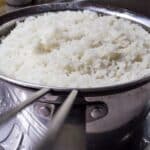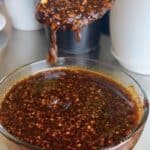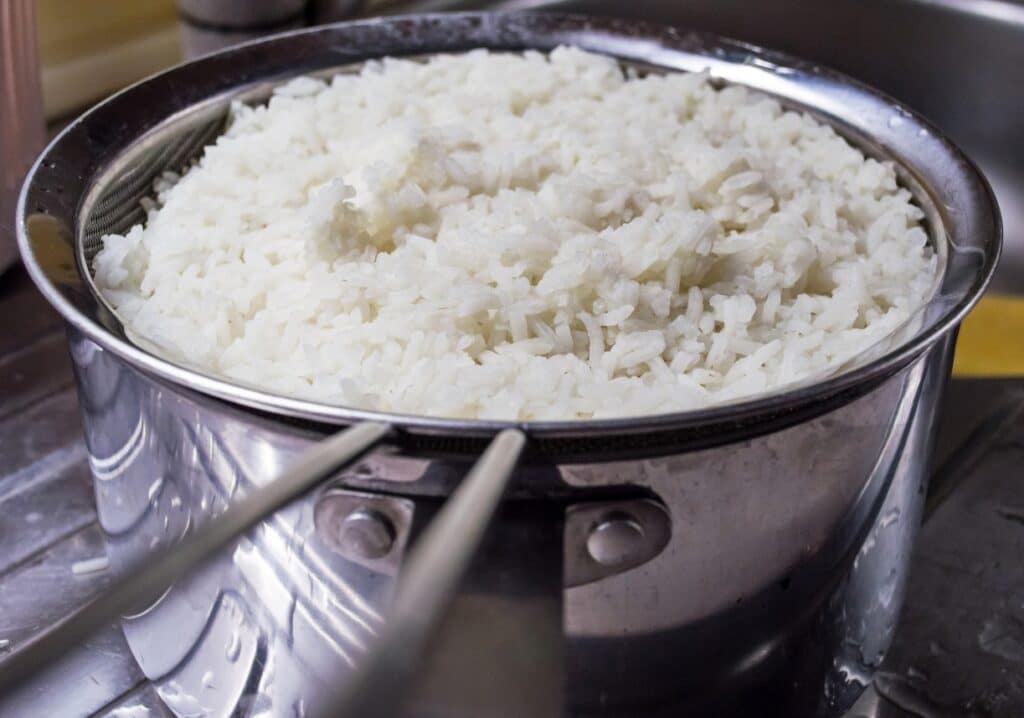A Brief History of Corn in Mexico
- December 2020
- By Karina Corona
- Recipe from Mexico

Do you know how corn became, well, corn?
Mexico is the land of corn. It’s processed and used in pozole; it’s used to make syrup; it feeds livestock; it’s ground to make tortillas, the base for hot beverages like atole, and the masa for tamales. Maíz is the soul of Mexico and holds a special place in the country’s cocinas and economy.
In addition to chiles, corn was the first plant to be domesticated in Mexico. While the vision of bright yellow corn may be the mainstream representation of the country’s cash crop, the truth is that corn is as diverse as the many ways it can be prepared and eaten. Ears of corn vary size and color, with some measuring anywhere from a couple of inches to one foot long and ranging in colors like white, red, yellow, blue and even black.
Corn is the most widely produced crop in the world and is grown in at least 164 countries around the world. Here’s a look at how it came to be the power comida it is today.
Tracking the First Grain
Some historians pinpoint the earliest evidence of domesticated maize in Oaxaca’s Guilá Naquitz Cave, dating way back to 4,280 B.C. But other researchers suggest that the birth of corn is a complex pilgrimage between Mexico and South America.
Archaeological evidence suggests that a genetic mutation caused the hard, outer coating of teosinte to disappear—a feature that made it difficult to eat—and that’s how we got the corn we’re familiar with today.
Archaeological evidence suggests that a genetic mutation caused the hard, outer coating of teosinte to disappear—a feature that made it difficult to eat—and that’s how we got the corn we’re familiar with today.
According to a report published in Science in 2018 by Logan Kistler—the study’s lead author and curator of archaeobotany and archaeogenomics at the Smithsonian National Museum of Natural History—maize originated in central Mexico some 10,000 years ago and “spread throughout the Americas before European contact. … The origin of modern maize cultivars likely involved a semidomesticated lineage that moved out of Mexico. Later improvements then occurred among multiple South American populations, including those in southwestern Amazonia.”
The legacy of domesticated maize evolved from wild teosinte, a sweet but hard-to-chew and essentially inedible, lowland native grass found in what is now southern-central Mexico. Archaeological evidence suggests that a genetic mutation caused the hard, outer coating of teosinte to disappear—a feature that made it difficult to eat—and that’s how we got the corn we’re familiar with today.
Corn Clout
Corn is so much a piece of Mexico that the Nahuatl speaking peoples of Mesoamerica referred to corn as “tlaolli.” Translation: “our sustenance”. Today, it’s grown across a third of Mexico’s crop land, yielding 27,000 tons annually.
Throughout pre-Columbian Mexico, maize was considered sacred. In “Symbolism and Use of Maize in Pre-Hispanic and Colonial Religious Imagery in Mexico,” academic Eva Leticia Brito Benítez writes that maize was “treated with respect and humbleness because it was the sacred element with which the gods had created the ‘real man’ after various failed attempts with other materials.”
The Tarascan culture, which settled in Michoacán between 1,200-1,521 A.D., created sculptures out of maize that represented their deities—specifically the goddess Xaratanga. Xaratanga means “the one that shows something” or “the one that bears plants and was the lunar deity with feminine attributes tied to agricultural fertility. Franciscan friars like Alonso de la Rea documented in the 17th century the many uses of maize and referred to the Tarascan people as “inventors” because of how they transformed the grain into molding material for their sacred figures.
Corn Today
While there are more than 60 varieties of corn in Mexico, there are two that stand out: sweet corn and dent corn.
Dent corn, or field corn, is usually yellow or white. Because of its high percentage of starch, this corn is best for making hominy (corn processed through nixtamalization). And grinding hominy creates masa harina, the type of corn flour used in tamales and tortillas!
According to el Gobierno de México, the development of Aztec, Maya, Zapotec, Mixtec, Purépecha, Totonac, Mazatec, Chinantec and Zoque peoples can be directly linked to the cultivation of corn. Today, corn continues to serve as the cultural link between Mexicans—and many Latin Americans as well.
Speaking of corn, did you know tortillas are the single-most consumed food in Mexico? Keep reading to learn more about this essential Mexican comida. And did we mention, tortillas are pretty much la comida perfecta, no matter the occasion, or how hungry you are, or time of day?
Here’s to maíz. Corn is vida. Corn is life.
MoreLike This









Got a question or suggestion?
Please rate this recipe and leave any tips, substitutions, or Qs you have!